How To Build A Bolt-Action Rifle

Building your dream bolt-action rifle from scratch is much less complicated than it used to be.
If you’ve been paying attention to the bolt gun scene these days, you’ll have noticed there are lots of words and phrases that have started to pop up that you might not be familiar with: pre-fit barrels, RemAge, small shank, large shank … and many more.
The baseline point here is that bolt guns are officially entering the drop-in-ready world, much like how the AR platform did two decades ago. However, much like in the early days when everyone was still figuring out how to work on these guns at home, the modular bolt action is still in its infancy, and there will be something of a learning curve for both consumers and manufacturers.
The Man Behind the Curtain
Bolt-action enthusiasts arrived at a problematic point in the recent past: As the AR market grew and parts became far more available and inexpensive, there was a noted decline in the interest with bolt guns, largely due to a substantially smaller aftermarket that relied on custom options and special knowledge.
Yes, for years bolt gun guys (including myself) bemoaned the time and expense it took to get a “real” rifle shooting well—without turning it completely into a bench gun that weighed more than a dozen pounds.
What we are left with in the bolt gun market is something a bit more practical: Most of the popular cartridges today are ones we’ve had, with a couple newcomers that have made an impression, namely 6.5 PRC. Because not much has changed and the winds still favor 6.5 Creedmoor and .308 Win., we see the first builder-focused modular bolt guns centering on popular, common short-action cartridges and their peripheral counterparts like AICS magazines and 700-footprint stocks and triggers.
But, at this time nothing is truly standardized. Here’s the how and why of what’s happening in the bolt gun world.
The Loose Thread
Up until recently, there were only a few methods of installing a bolt-action barrel. One was to send it back to the factory to get replaced. Another was to have the action sent out where a gunsmith would do some special voodoo and install a custom barrel to your action. The third was relatively limited in scope: If you had a Savage rifle, you could find a company making “finished” barrels that you would install yourself using a headspace gauge.
Point being, unless you were a machinist or had the right tools and skills, you were stuck with what you had. Even threaded muzzles were not common a decade ago. I remember taking barrel blanks to my gunsmith to be cut and threaded for my Savage actions back when I was in college, because nothing I wanted was commercially available.

As a result of Savage actions being the only common ones available for garage builders, the Savage small-shank barrel became the chosen barrel of hobby builders. What you need to understand is that these barrels were not headspaced—they had a variable shoulder, known better as the famous Savage barrel nut. While I have the option of using shouldered pre-fit barrels, I still prefer to use what I grew up with, and I like to headspace my barrels manually using a barrel nut. This isn’t necessary today, but the option exists.
The old method of installing a barrel would be much more challenging. Take the example of the golden age of surplus: You probably saw dozens of ads in the early 2000s for “Short-Chambered Large Ring Mauser” barrels in magazines and sports catalogs. These barrels would need to be installed and tightened down. Then, a reamer would need to be used to physically remove metal in the chamber, with the builder checking headspace with gauges constantly. If you messed up, well, tough luck … and you’d had better own a lathe to fix your mistake. This is still how many custom rifle gunsmiths install a barrel on an action.
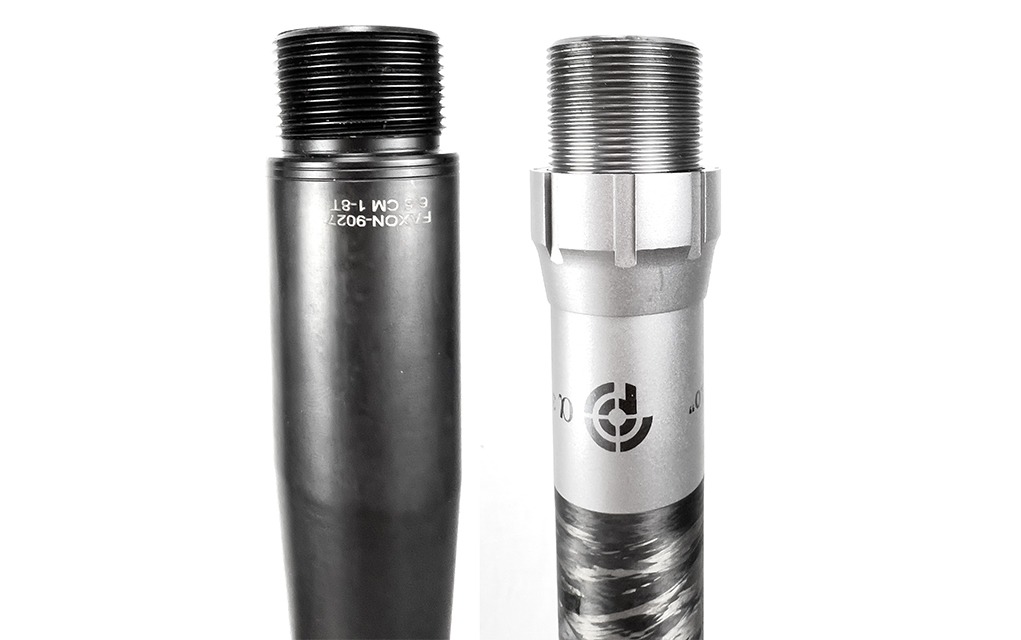

With Savage barrels being something of a hobby standard, we later began seeing early custom actions that could use the Savage barrel thread. While not getting too technical, the Savage thread is finer than Remington (the other main thread type, more on that shortly), and it’s debated if it provides better accuracy over a coarser thread. Having used them both long term, I do not think this matters.
Later, Remington 700 owners who wanted the same capabilities as Savage owners began requesting variable shoulder 700 barrels, aptly called RemAge (for Remington/Savage) that used a barrel nut and a Savage nut wrench. Be aware that many companies use their own action threads, so not everything is divided into Camp Savage or Camp Remington … for now.
Today, we’re entering an even more interesting era with factory pre-fits. The two main players in this area are Faxon Firearms and Aero Precision with their respective FX7 and Solus actions. At the time of this writing, you can in fact purchase what amounts to drop-in ready pre-fits for these actions. Simply put the barrel in a barrel vice, spin the action on and insert the action wrench (both companies offer action wrenches—you’ll need them, don’t damage your action being cheap) and give it a good tightening. Don’t use a hammer or Loctite, just a good bit of leverage.
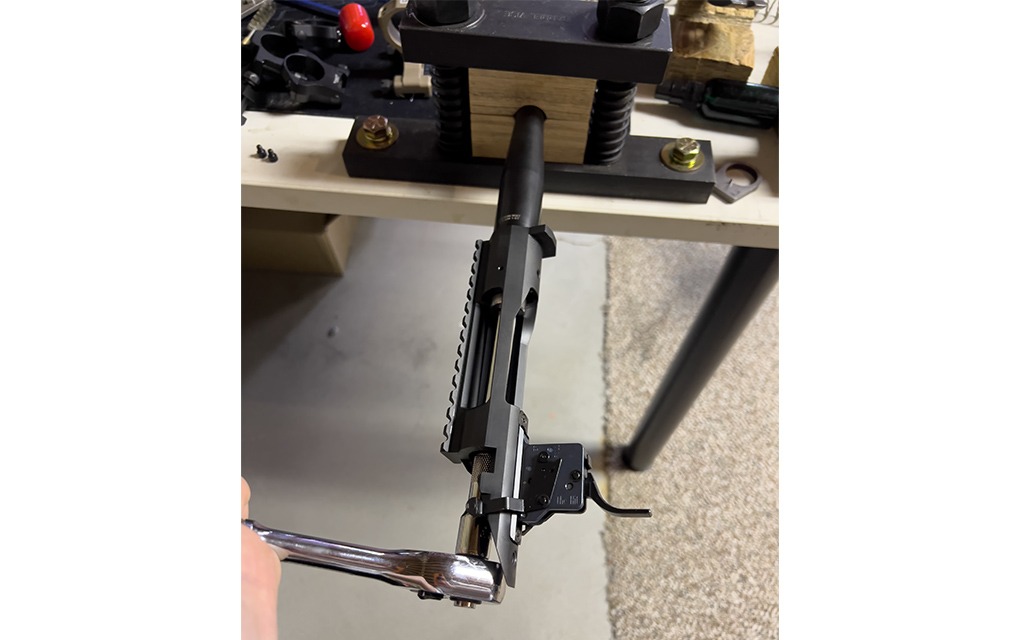

And you’re good to go right away; just assemble the rifle like you normally would. While it might surprise you, many custom pre-fit barrels today that use this method have wrench flats on them, enabling you to change barrels in the field. I hope to see this feature on factory pre-fits soon.
Now, the Faxon and Aero receivers do use different barrel threads, but they have a good deal in common relevant to the rest of this article. The Faxon uses the RemAge thread pattern; the Aero uses Savage. There are advantages here on both, but they’re not interchangeable. Faxon RemAge barrels can be used on the 700 short action, so if you are already a Remington fan this would probably make a lot of sense.
Likewise, the Aero Solus can use Savage barrels but it also can share with actions like Zermatt, also featured in this article. These two camps are not enemies, with Faxon even making Savage-thread barrels now. I do think that there may be a change in the winds down the road, and my money is on the Aero/Zermatt-style pre-fit becoming the “standard” barrel that other companies will start offering.
Who knows: In five years, we might have dozens of bolt action barrels available from a bunch of companies … just like we have with AR barrels today.
Finding Common Ground
Other parts have managed to become standardized across the board, unlike barrel thread patterns, although threaded barrels are standard now.
As a shooting community, we like muzzle devices and suppressors, and the ability to choose what’s right for each of us is what it’s all about. For today’s common/popular calibers, we have a handful of muzzle threads, with the most common being 1/2-28 inch for .22 bore and 5/8-24 inch for most things up to .30 caliber—so virtually all hunting and field chamberings.
The bigger you go the less standardized thread patterns become, and many companies thread for what they want. For instance, multiple .45-caliber threads are out there. I personally favor 11/16-24 inch for .450 bores. You really can’t go wrong with many of today’s muzzle accessories, and there are more every day that will suit your new bolt gun build.
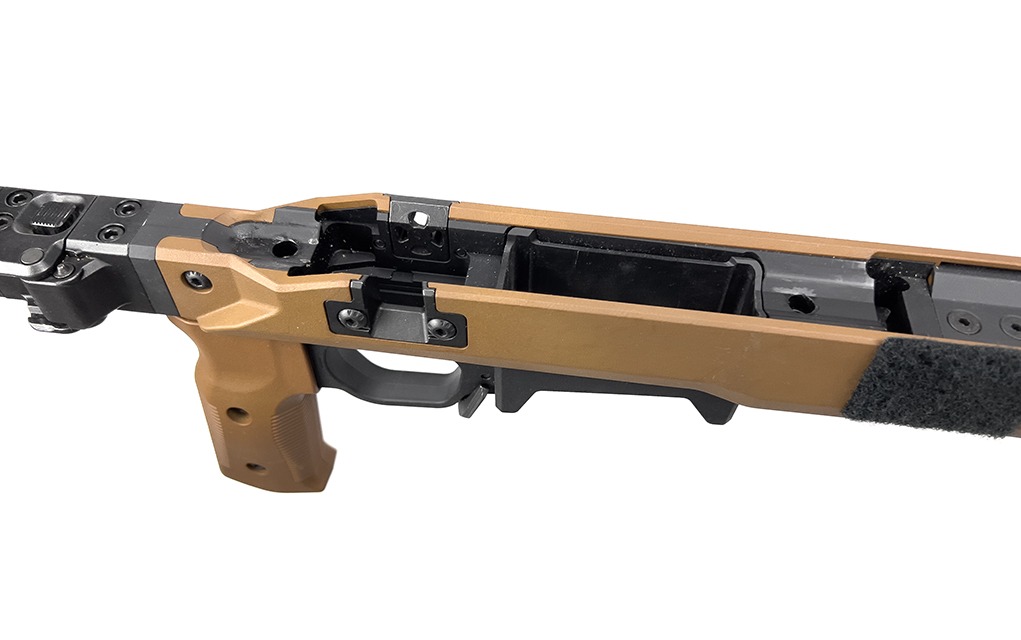

Another area of commonality is stocks. Aftermarket Remington 700 stocks began to take off in the early 2000s, and eventually they spawned an entire market with dozens of different traditional versions, as well as competition and tactical chassis designs. Today, we see that the field for these stocks is populated densely with two footprints: the Remington 700 long action and Remington 700 short action. Many actions today are made to fit these respective screw spacings and dimensions. As a result, virtually all new actions made are designed to work in just about any stock. You have lots of options, and the majority have generous barrel channels to accommodate even the heaviest tubes.
Another thing that has become the standard is the AICS (Accuracy International Chassis System) magazines. These are meant to work in many chassis models and various bottom metals, in particular with another de facto standard: the M5 bottom metal. Magazines used to be proprietary to the manufacturer, but now you aren’t limited to this, and you have high flexibility in the magazine capacity and cartridge. The AICS pattern in short action can be had in everything from special .22 LR mags that can use the full magwell (popular in long range rimfire) up to and including short-action magnums and straight-wall cases like .450 Bushmaster.
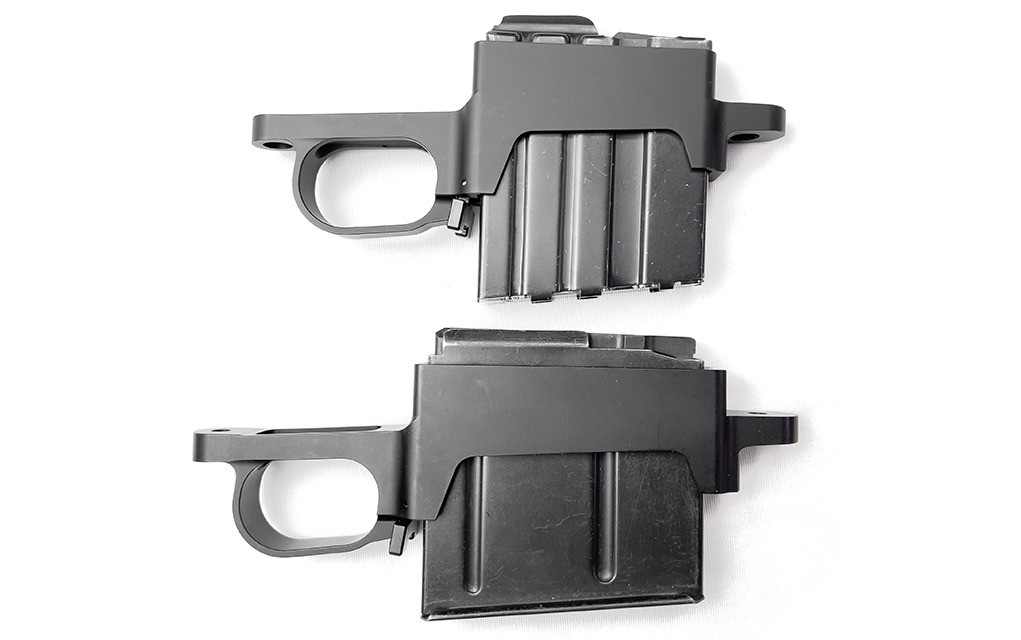

Triggers are the next thing that is largely universal. Most actions today use the Remington 700 trigger assembly. This is a bit of a no-brainer because it’s so easy to install and it’s a self-contained unit, unlike many other types of triggers that are dedicated to their respective actions. There is, therefore, less specialization when a company designs an action, giving them a proven trigger and you the ability to select your own for your end use. I personally use only Timney triggers in my bolt guns. I’ve used these triggers for years and I have come to completely trust them. There are, of course, many fine brands out there, and it’s hard to go wrong.
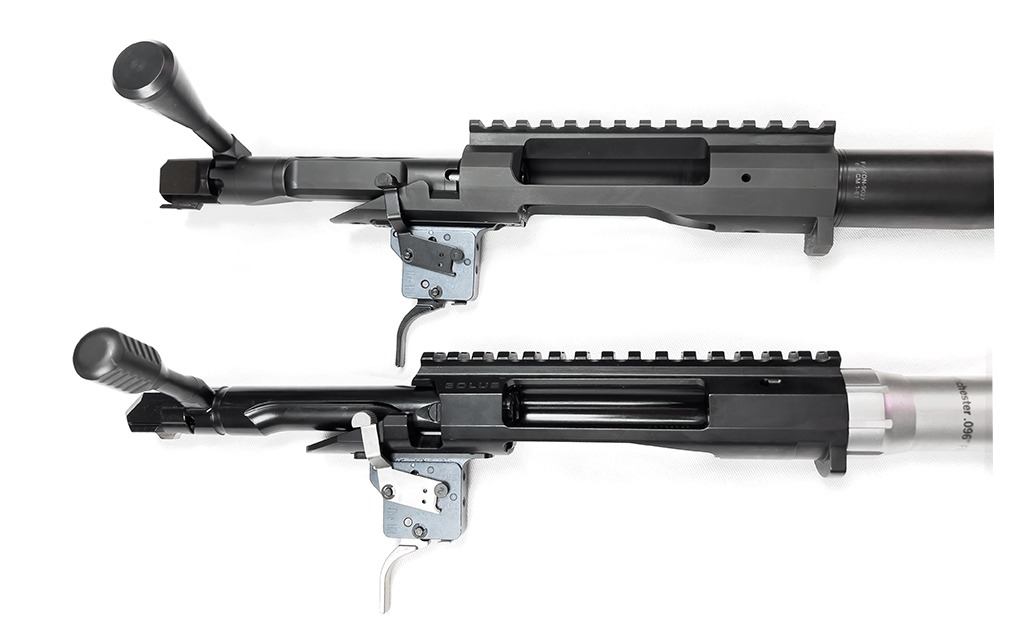

When it comes to overall size of the rifles, we see that the market is favoring short actions. At the time of this writing, neither Faxon nor Aero lists long-action versions of the FX7 or Solus, but the LA Solus had been announced earlier in the year. Time will tell what other variations arise. Likewise, neither company lists long-action caliber pre-fits or any long-action chambered barrels at all. The short action market will likely continue to dominate the conversation for some time, with long-action builds being of more interest to hunters seeking more powerful cartridges. With great short-action rounds like 6.5 PRC out there that can take most American large game, I can’t speculate on the success of these long actions with their smaller aftermarket.


The Author’s Tips
I’ve been building out bolt guns since I was 14, and I’ve learned a thing or two about how to do it right. The old guard of bolt guns have essentially been gatekeepers to knowledge and sometimes kept it secret to help give their builds an edge—and a high price tag.
Here’s the thing: Today’s guns and barrels are pretty darn good. I’ve owned factory Savage rifles that shot better than some very high-end precision guns. It’s become far easier to acquire and build accurate rifles today than ever. Off-the-shelf parts are becoming increasingly better, and the need for things like glass bedding and lapped scope rings are just not as necessary today as they once were.
If you want a custom bolt gun built for you, do not let me persuade you from doing so. But in today’s world, you shouldn’t be surprised if someone’s less expensive home build is just as accurate. Even at that, don’t be surprised if a semi-auto gives your bolt gun a run for its money. Times are changing.
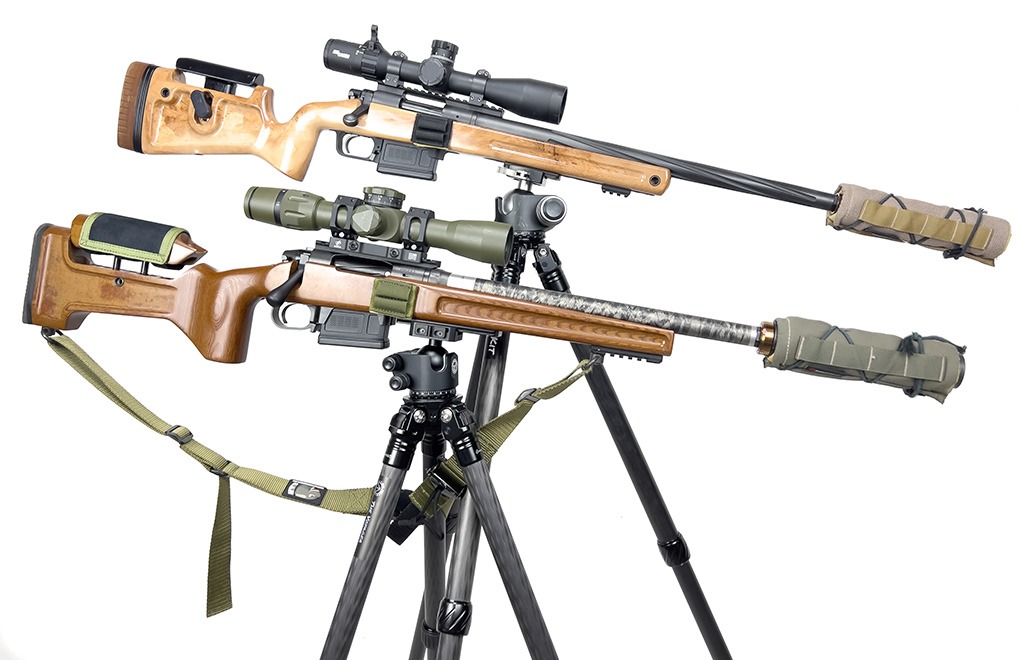

It’s also worth noting here that headspacing is one of those things that people get freaked out about. Well, back when headspacing a barrel meant possibly doing it wrong, such as getting chatter in the chamber from the reamer, this was a costly, sweaty-palms proposition. I can tell you honestly that headspacing the old way is hard, but I will also say that you shouldn’t stress about it: These days, headspacing gauges are pretty easy to use and understand. After you do it once with a barrel nut setup, it’s like second nature.
The next pointer I have is on the budget scale. I work with some very high-end products in order to produce the best content for your eyes to delight in, and in that pursuit, I have come to see that many people are very conceited about their brands of choice. I like to look at what is happening with actions, but, in reality, most are more similar than they are different.
See, if we’re working inside the 700 footprint, with 700 triggers, 700 chassis systems, stocks and AICS mags, we’re actually working in a somewhat limited space. I’ve been accused of both being a “snob” and at the same time have had the FX7 and Solus actions I am using here called “budget” actions. That’s BS. Having used many actions, I can readily say that most of them are overpriced for what they offer. Don’t let anyone action-shame you.
Barrels, however, are not something to go cheap on. All things being the same, a high-end barrel will typically shoot better than lower-cost options. But, at the same time, manufacturing technology is so good now that factory pre-fit barrels I have here are all shooting under 1 MOA right out of the box.
Editor’s Note: This article originally appeared in the December 2024 issue of Gun Digest the Magazine.
More On Bolt-Action Rifles:
Read the full article here







